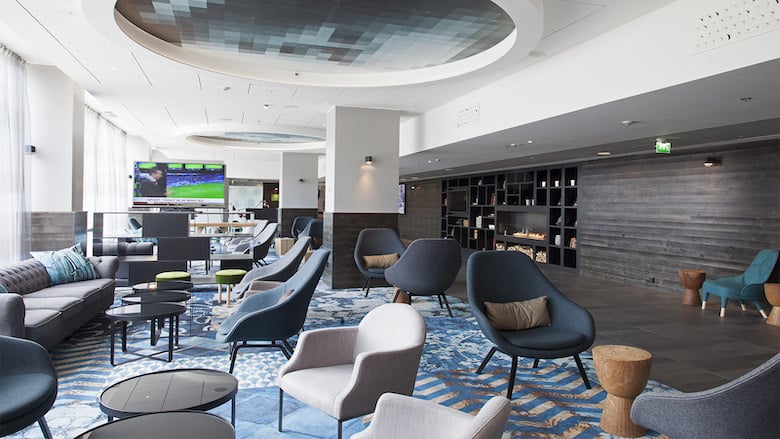
Table of Contents
Introduction to hospitality carpets
Why Use Hospitality Carpets vs. Hard Flooring
Design Considerations: Wall-to-Wall vs. Carpet Tiles
Design Considerations: Tufted, Woven or Needle Punched
Choosing the Right Hospitality Carpet
Designing for Acoustics With Hospitality Carpets
Understanding Carpet Properties
Getting Ready for Your Hospitality Carpet Project
Carpet Maintenance
How Much Will Your Hospitality Carpet Cost?
Do You Have a Current Hospitality Project You Want to Talk About?
In the hospitality industry, offering great service means creating a top-notch experience. Whether you're designing and selecting carpets for hotels, restaurants, bars or clubs; a great experience begins in a flawless and unique environment. Your job is to engage and wow patrons from the moment they walk in the door. What better way to do this than by designing the surface they set onto?
With a versatile array of designs and styles, amazing acoustic properties and undeniable comfort, hospitality carpets are a superior flooring option for your next hospitality project.
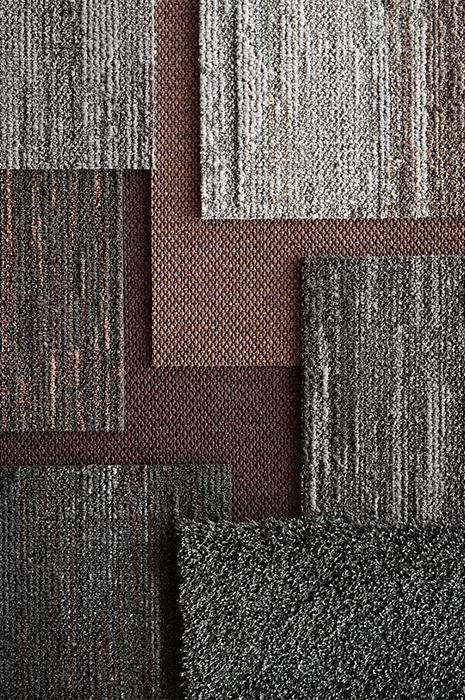
We know that every hospitality project is different, has its own objectives and is aiming for a unique ambiance. It can be difficult to choose which hospitality carpeting is right for your project.
That's why we've put together this comprehensive guide to walk you through every step of the process, from selection of your hospitality carpet, all the way to installation and care. Enjoy!
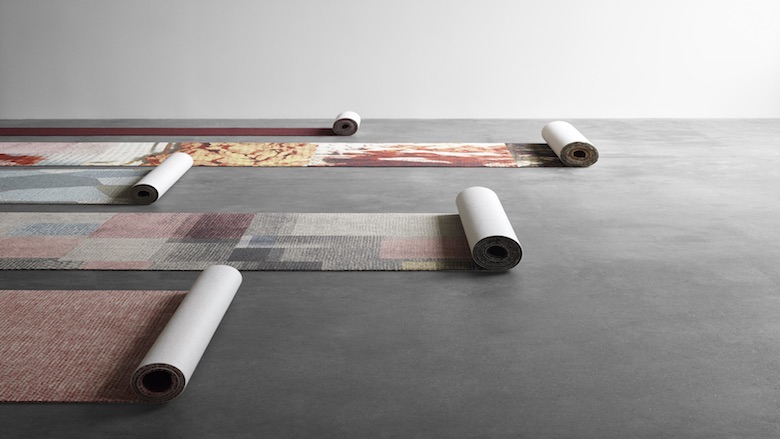
To create a unique and comfortable environment that solves for the abundance of sound inherent in hospitality establishments, the best bet is to go for carpets designed specifically for hotels, bars, restaurants, and conference rooms.
While other flooring options, such as hardwood, polished concrete or tiles have their place in certain projects, generally speaking, these options lack the diversity in style, design, texture and construction type that hospitality carpeting can offer. When installed correctly and properly maintained, the benefits of hospitality carpets simply can't
Hospitality carpets offer unmatched design versatility. With carpeting, you can choose from a wide array of different
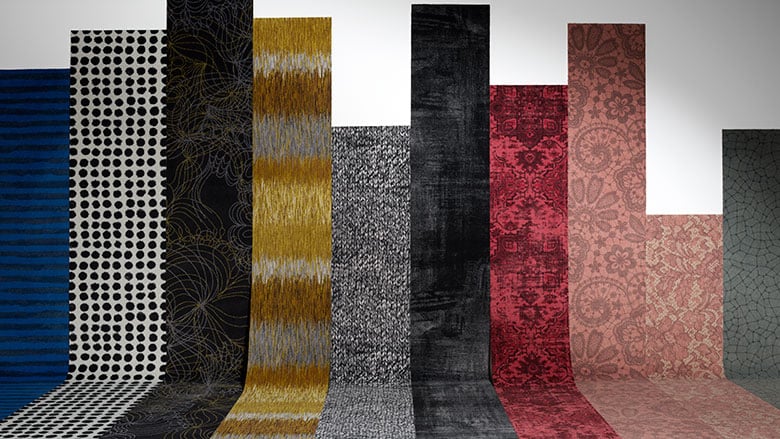
In the past, the choice of a standard selection vs. custom carpet design was a question of budget, time constraints
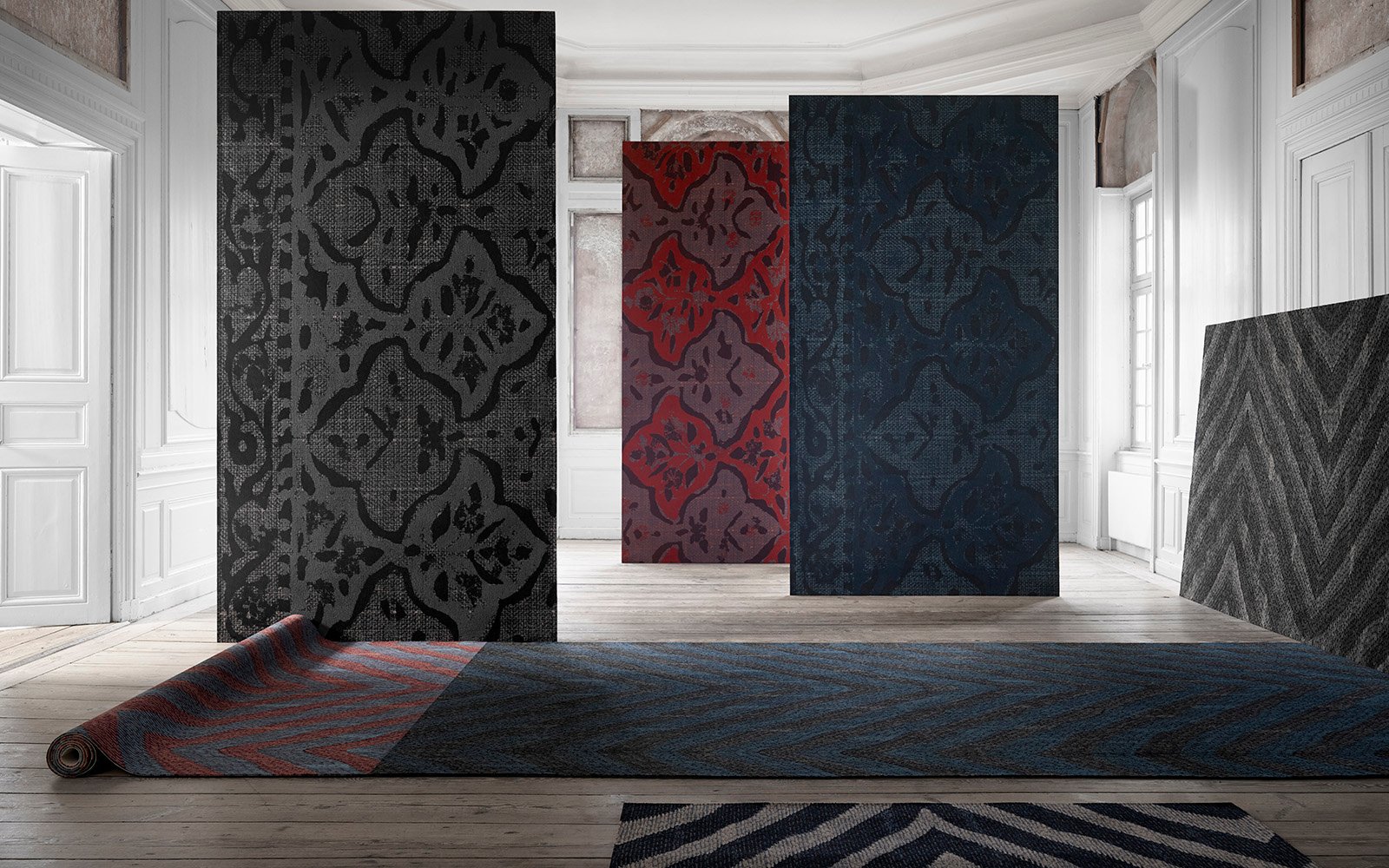
Get inspiration from some of our
While durability is often cited as
To make sure you get a durable carpet for your hotel or restaurant, be sure to choose a manufacturer that adheres to proper international standards. In Europe, this means all carpets should be tested and certified in accordance with EN 1307, which rates carpeting on durability and long-term appearance retention. Beyond this, though, ensure that the manufacturer you select uses proper testing equipment in all product development activities.
As architects and designers, you know that accounting for noise is critical for hospitality projects. Your job is to facilitate intimate environments, in spite of the many people within them. This is where hospitality
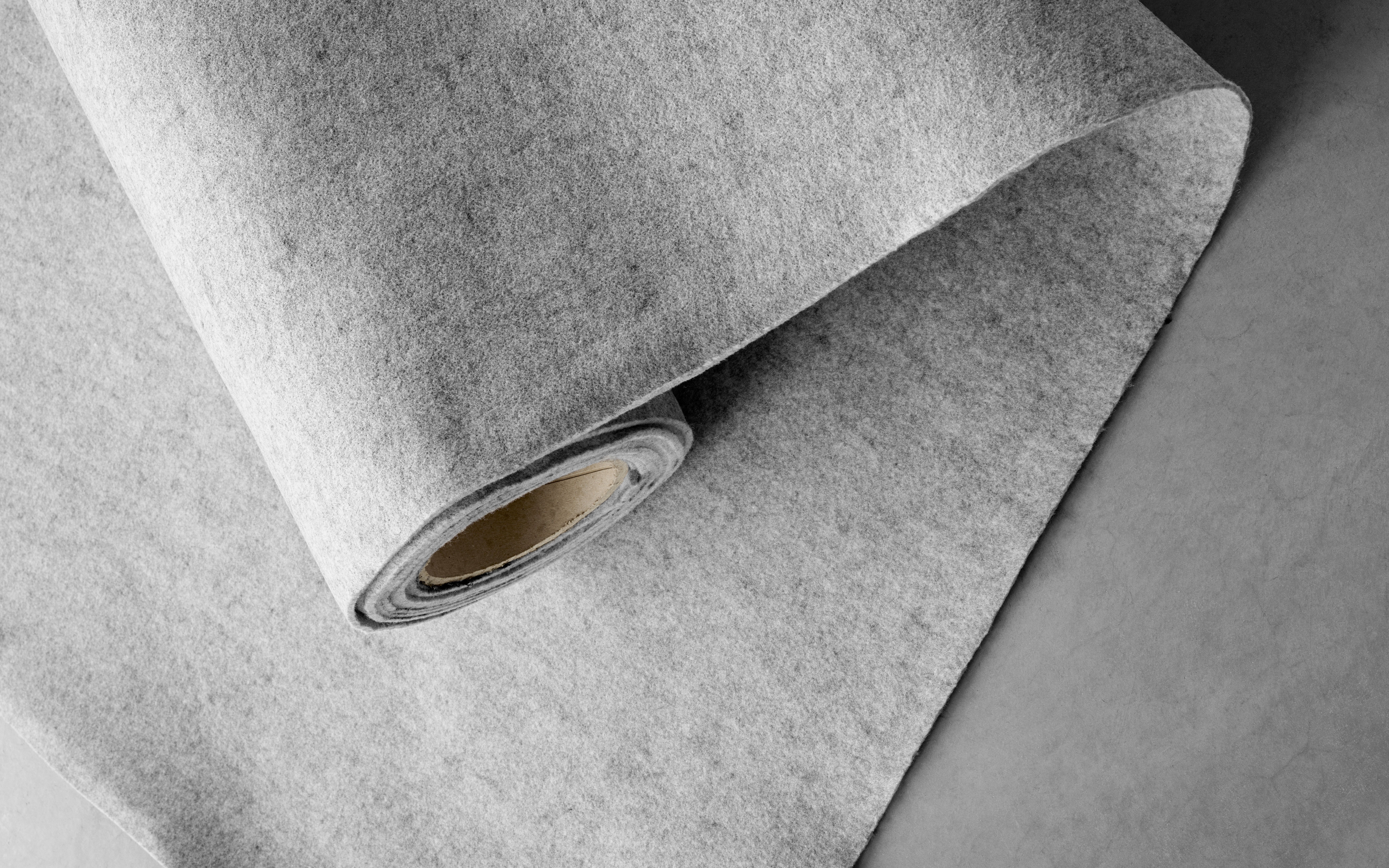
Static electricity and the shocks that you get from it can be quite the annoyance. The great news
The
The temperature in a carpeted room can be lowered 2-3 degrees Celsius without the room feeling any colder. As you can imagine, this could have significant effect on the energy bill of a hotel with hundreds of rooms!
Carpet is a safer option than hard-surface alternatives. Its springy
Sustainability is becoming an increasingly important design consideration. More and more, we hear of clients requesting that architects and designers incorporate sustainability into their hospitality projects. Is sustainability a main concern for your project? If so, choose a carpet manufacturer that considers and actively addresses their environmental impact at every step of the manufacturing process. One particular area of concern you should be aware of is what their carpet backing is made of. Many manufacturers, for example, use bitumen and PVC in their carpet backing, which is harmful to the environment. Look for manufacturers, such as E
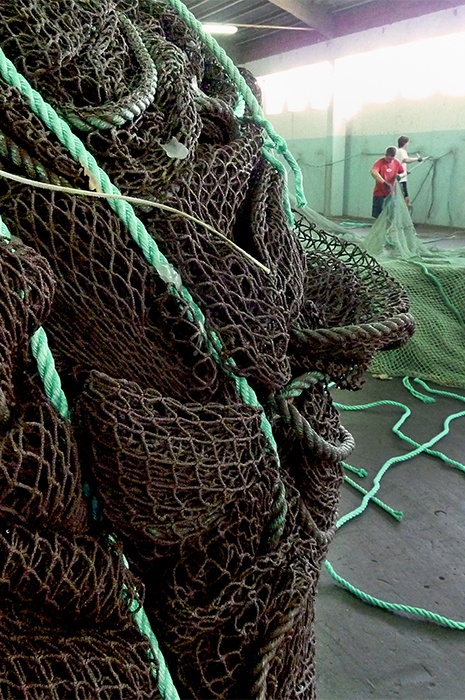
If sustainability is important for you, or your client, read about the 11 factors you should look at, to ensure your commercial carpet manufacturer is truly sustainable. Further, check out how we, here at E
So you're sold on hospitality carpeting. Now what? There are still many choices to take into account before delving into your final selection. It may seem like
Wall-to-wall carpet, also known as “broadloom” or "fitted carpets", offers superior quality and design versatility. Despite the name, a wall-to-wall carpet doesn’t need to cover an entire room. It can be contained to specific areas and even used to complement other flooring types.
A wall-to-wall carpet is the option you'll want to go with if you require large-scale patterning or custom designs. It's great for large spaces and hospitality projects with high design ambitions.
Further, because of the many
Bear in mind, though,
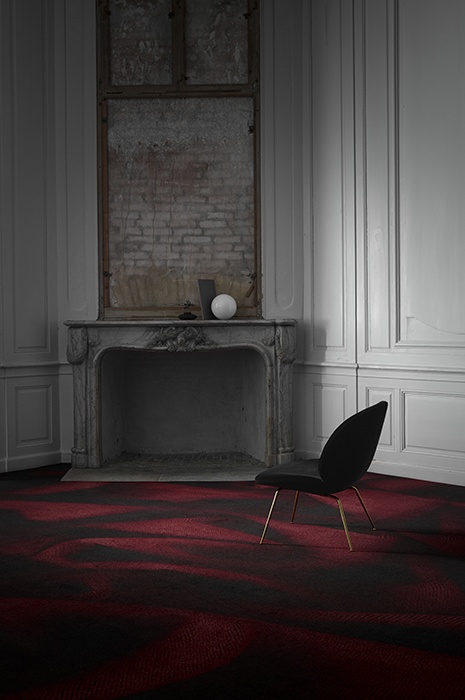
Carpet tiles are small squares of carpet that can be installed and combined in many versatile ways. Carpet tiles are cost-effective, as well as quicker and easier to install. Because of their modularity and small size, they generate less waste in the installation phase - only 1-3% - but further, are easier to sub out and replace should a single tile be destroyed or stained. Carpet tiles are often used in bars, clubs, and even restaurants.
There will be some drawbacks, though. For one, even with the best installation, you'll always be able to see the seams between tiles. This means you can’t achieve the look or feel of a single piece of flooring - if this is the objective. Further, because carpet tiles have pre-attached backing, they lack the plush underfoot feeling of some wall-to-wall carpets.
Recent technological advances, however, have enabled carpet tiles to appear more seamless and have provided an array of versatile options for designing with them.
While they don't always fit the needs of more complicated or high-end projects, carpet tiles may be an attractive option if you're working on a mid-range or less complicated hospitality project.
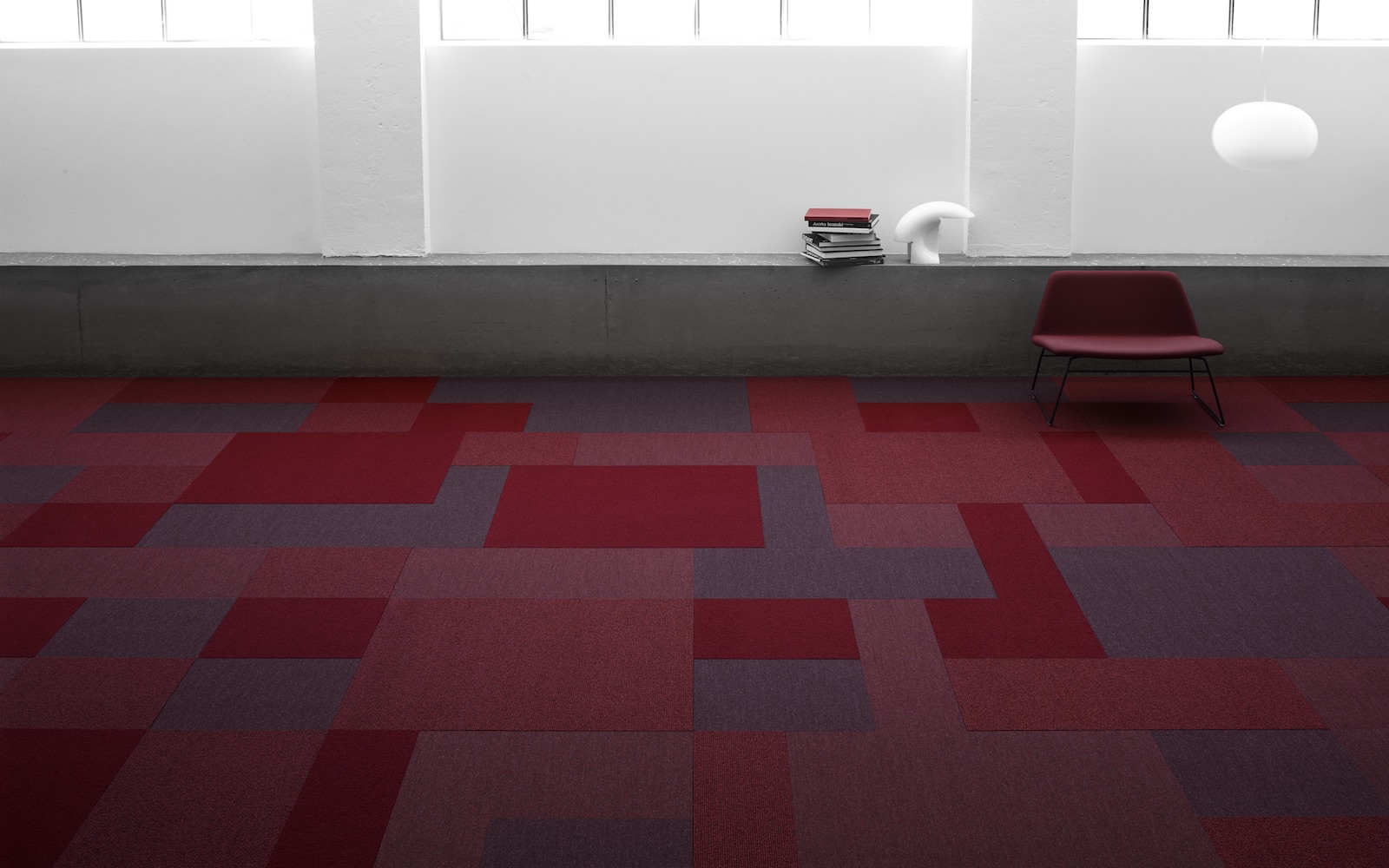
Design Considerations: Tufted, Woven or Needle Punched Carpet
Tufted carpets have a fast production time, lower price point and come in the variety of different designs. Accounting for 95% of all commercial hospitality carpets on the market, tufted carpets are applicable to most projects. When superior quality and endurance are of top concern, however, they might not be the most attractive option.
Woven carpets - or carpets produced on a loom - were the only option up until the 1950s. Since then, production machinery and synthetic materials have allowed for other possibilities, but woven carpets are still on the market and selected today because of their superior quality and durability, particularly with natural materials. Woven carpets are a good choice for a high-end hospitality project.
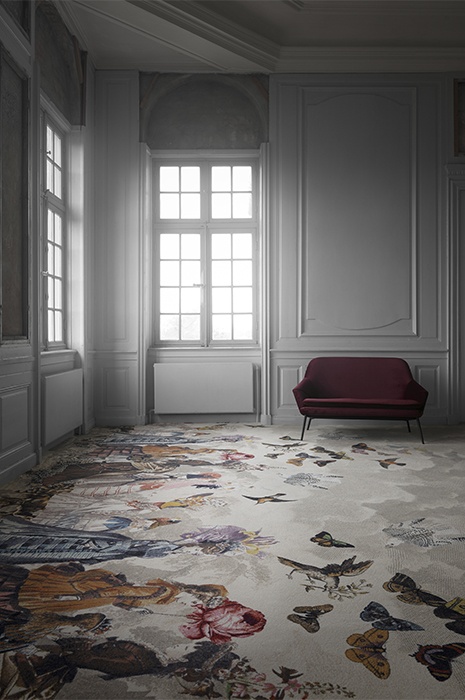
Needle punched carpets are
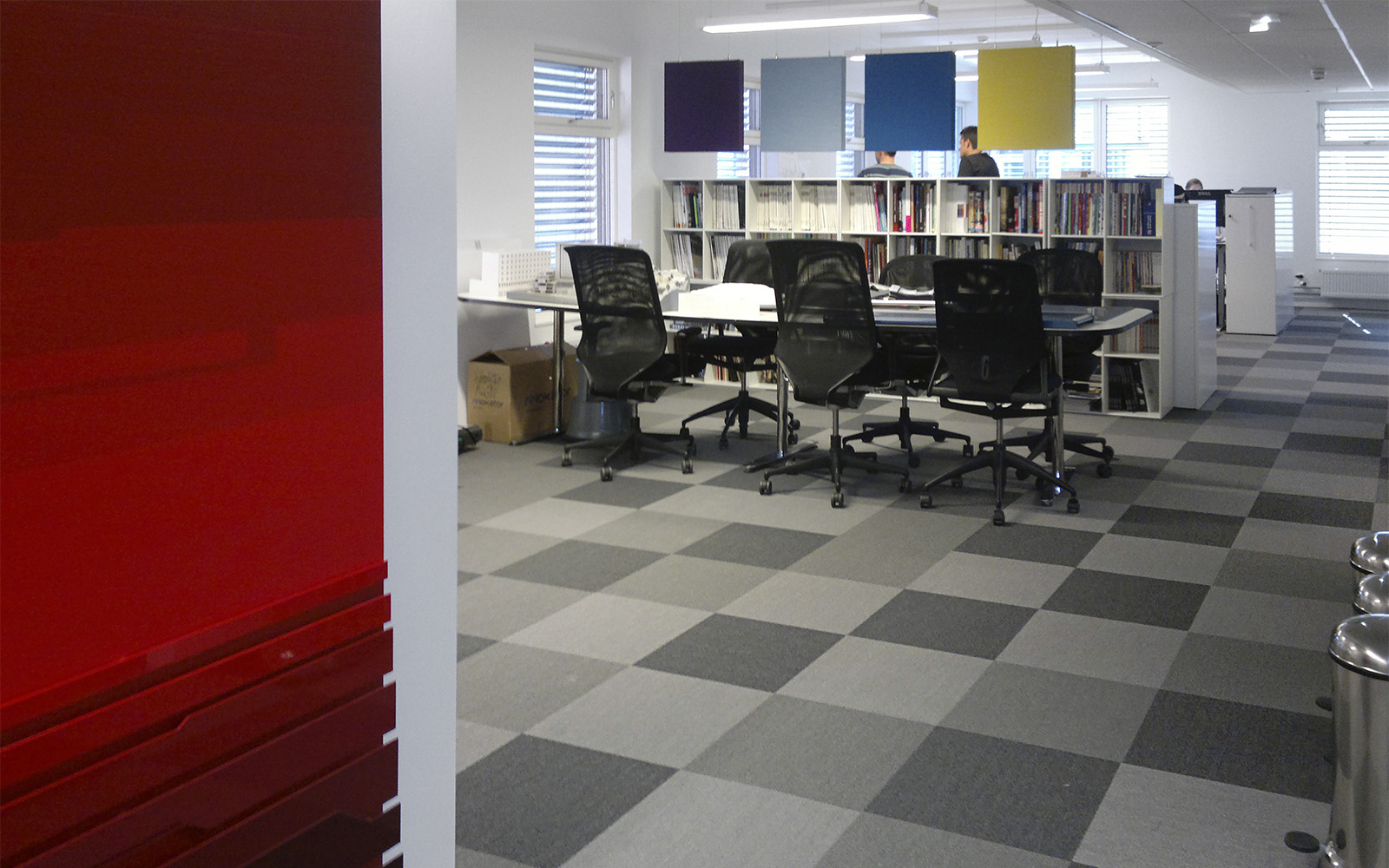
Now you understand the benefits of using a carpet design for your hospitality project and the choices you have, in terms of hospitality carpet's form and construction. What else should you consider?
Some main properties to keep in mind when choosing a hospitality carpet are: acoustics, durability and soil resistance.
Ultimately, though, the properties you should consider
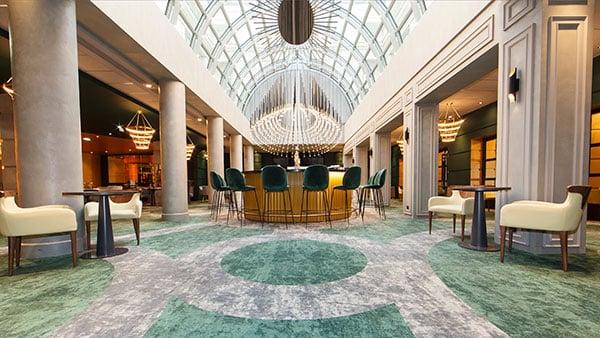
If you're designing and selecting hospitality carpets for a five-star hotel or top-of-the-line restaurant, there's no question, your client and their future patrons will want every detail tended to. This doesn't just mean choosing the best of the best materials anymore, this means telling a story with your carpet design choices and creating an experience unique to the establishment you're designing for.
A great vehicle through which to tell this story is a quality custom wall-to-wall carpet. With custom wall-to-wall carpeting for hotels, you can seamlessly integrate your vision into your design, creating a truly unique experience - both visually and texturally.
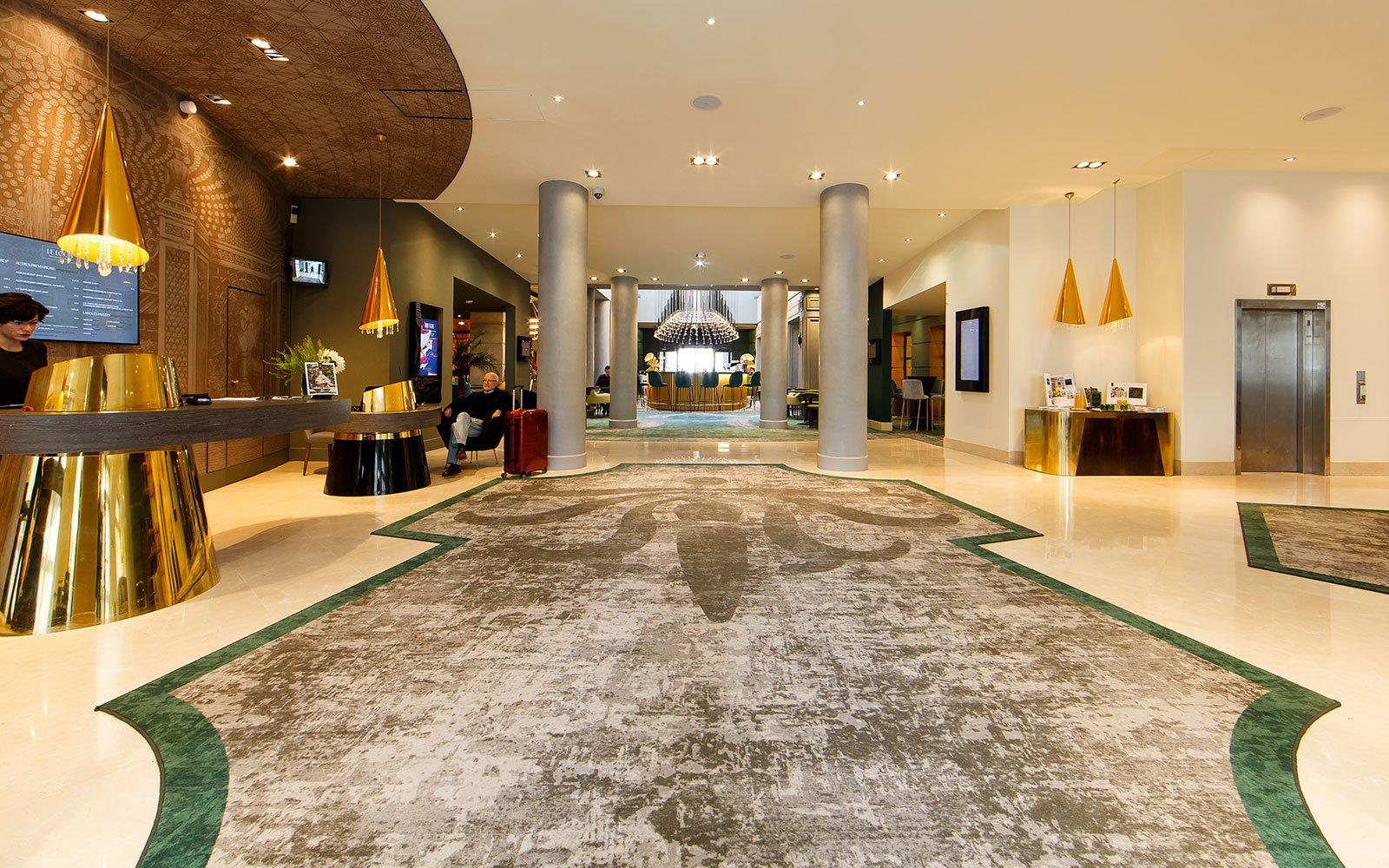
It's even possible to order custom carpet designs as small as 4x4
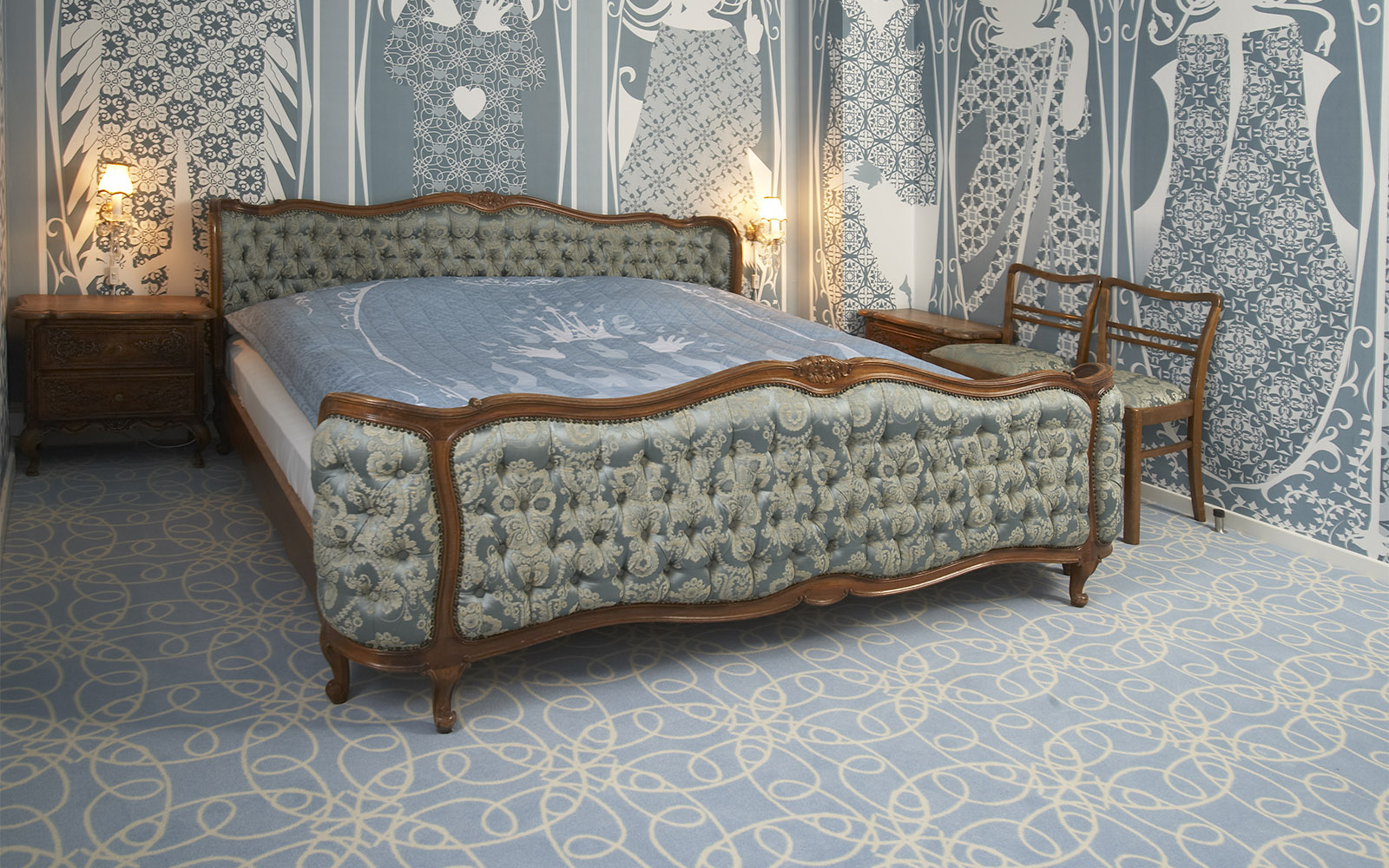
A custom hospitality carpet provides so much more than hard flooring. It can help you carry out a unifying theme in your hotel design, it can subtly separate spaces, it can help you express the personality or history of a space. The choice is yours. Check out our guide, “10 Amazing Carpet Cases we Love,” to see how your hotel carpet choices can help achieve your design objectives in unexpected ways. For further information on wall-to-wall carpet check out our comprehensive guide.
For mid-range projects where custom wall-to-wall designs are desired, but where budget is limited, a good solution is to use custom designed hospitality carpets in lobbies, or main public areas and use more cost-effective approaches in the lesser-used areas.
For a casual space - for example, a bistro, pub, bar, or club - a custom designed carpet might not be necessary. For projects like these, your best bet might be to go with a standard selection of hospitality carpets. With a wide range of
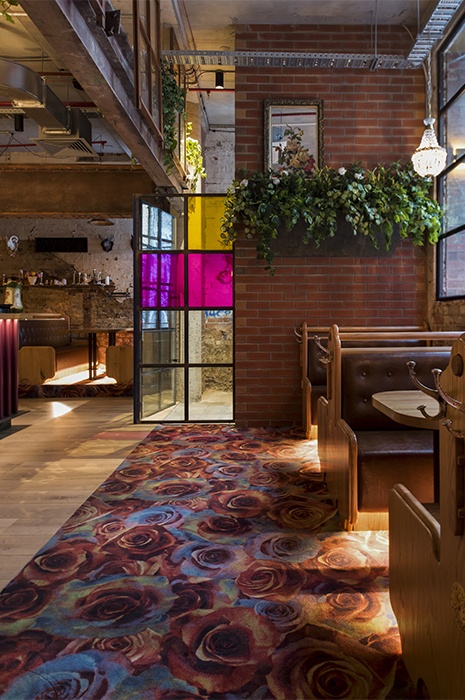
Worried about stains mucking up your beautiful new carpet? In the hospitality business, stains and dirt on the carpets is a real concern that you should take into consideration when choosing the right carpet for your hotel, bar or restaurant environment.
Our recommendation is to choose a medium range colour. Medium range colours work best for concealing stains - both light and dark and offer little contrast to daily soil buildup, so the eye is not drawn to it. This way your carpet, whether it being located in a hotel or a bar environment, will look clean and new for years to come.
With all this in mind, go forth and get some hospitality carpet inspiration. Check out our articles "4 Bold Design Trends to Watch" and "5 Unexpected Ways to Use Carpets in Interior Design".
Acoustics are a huge concern when designing for a hospitality project. How relaxing would it be to walk into a fine hotel and hear the voices of concierges, bellhops
Whatever your goal, with its natural sound absorptive properties, carpets are a great choice when it comes to absorbing sound and cutting down noise levels in hospitality project. Some of the more creative interior designers are even beginning to use carpet for tapestry or wall covering to achieve an even greater muffling effect when required.
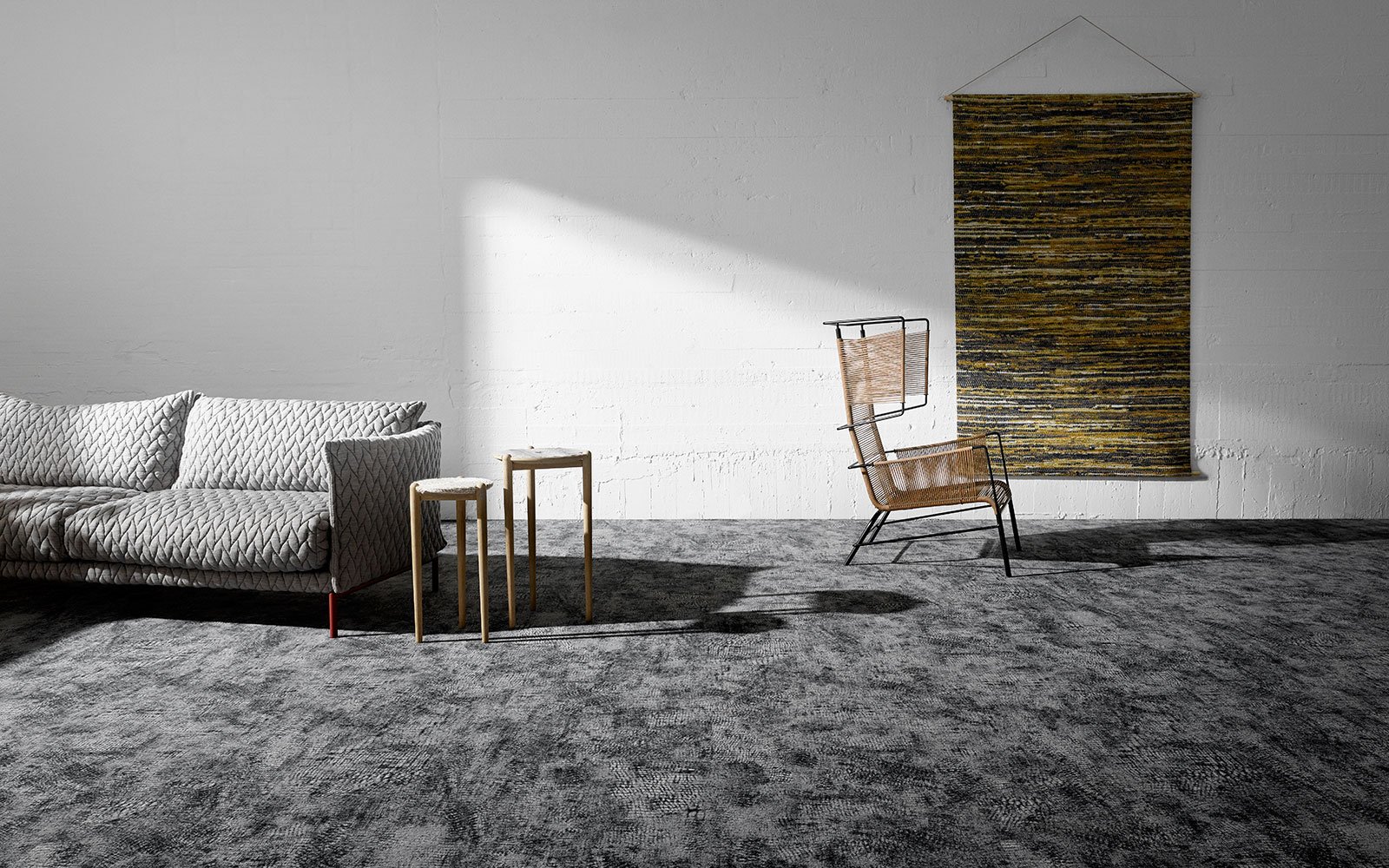
The acoustic benefits of hospitality carpeting, though, aren't a factor of the carpet alone, but the padding, or backing used beneath it. As a rule, the thicker the underlay you select, the greater the sound absorption. Manufacturers, such as E
For a more comprehensive guide on how to
Having delved into the task of selecting your preferred carpet and its accompanying backing, I'm sure it's become clear that there are many variables and properties to consider, beyond physical appearance. With so much to contemplate, it's crucial that you consult with your client and decide which properties they deem most essential for their hotel, restaurant, bar, etc. From there, check that the carpet you select holds all relevant certifications and classifications to ensure performance in these areas.
As previously mentioned, EN 1307 is a European standard that rates long-term appearance retention. Test results



To qualify for ISO 10361, a carpet will undergo the Vettermann Drum test, which detects how much a carpet will change based on heavy foot traffic. This test is crucial for carpets intended to be used in areas like entrances and walkways. The test provides results on a 1-5 scale, with 1 being a heavy change and 5 providing no change.





For a more comprehensive understanding of carpet compliance, please see our article, “Understanding Properties, Certificates
Now you know the properties you're looking for in a hospitality carpet and how to ensure the carpet you select is properly tested and certified in line with your preferences. You may even have your hospitality carpet picked out. What do you need to do before you're ready for installation?
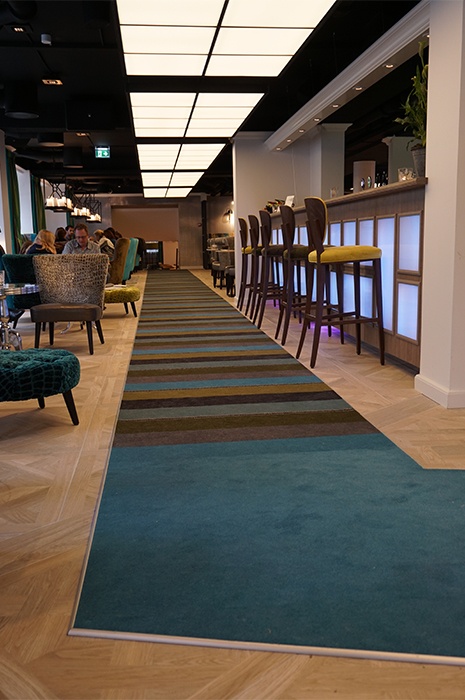
This next section will walk you through the steps you should take from before you place your order, through preparing for the installation. We can't stress enough that the success of a hospitality carpet project is the result of thorough communication between project planners, suppliers, clients
First off, before you place an order, get a feel for what the carpet and design you have in mind will look like in practice. Take the carpet sample on site, for example inside the hotel room, and see how it looks in context. Pay close attention to the effect the light has on it - different lighting can drastically change the way a carpet appears. Make sure that the sample is made in the same quality as is specified for the final carpet - this will also influence the look and feel.
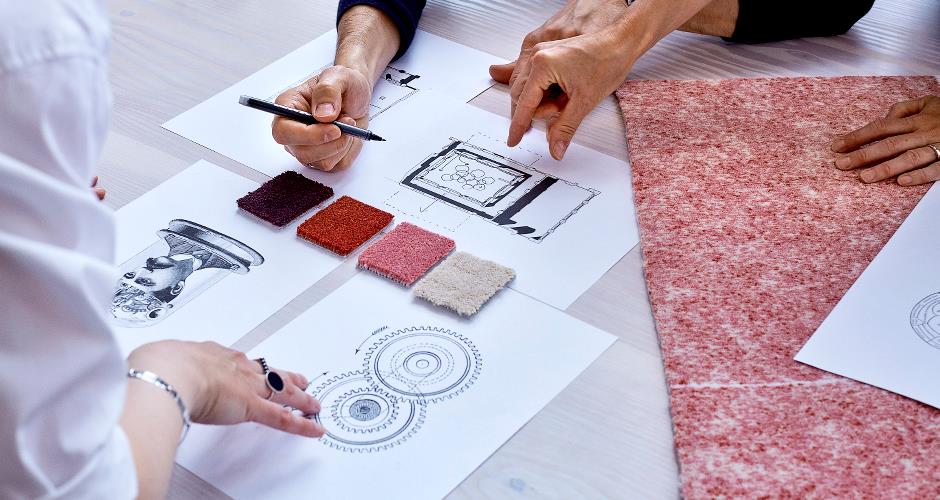
Before you make your final selection, we suggest you check out our guide - The Main Problems You Will Face With Carpets – and How To Overcome
Just as important as your carpet selection is the kind of carpet backing you choose to accompany it. The backing, or the fabric and yarn that make up the underside of the carpet, can determine quite a lot about how your hospitality carpet will perform.
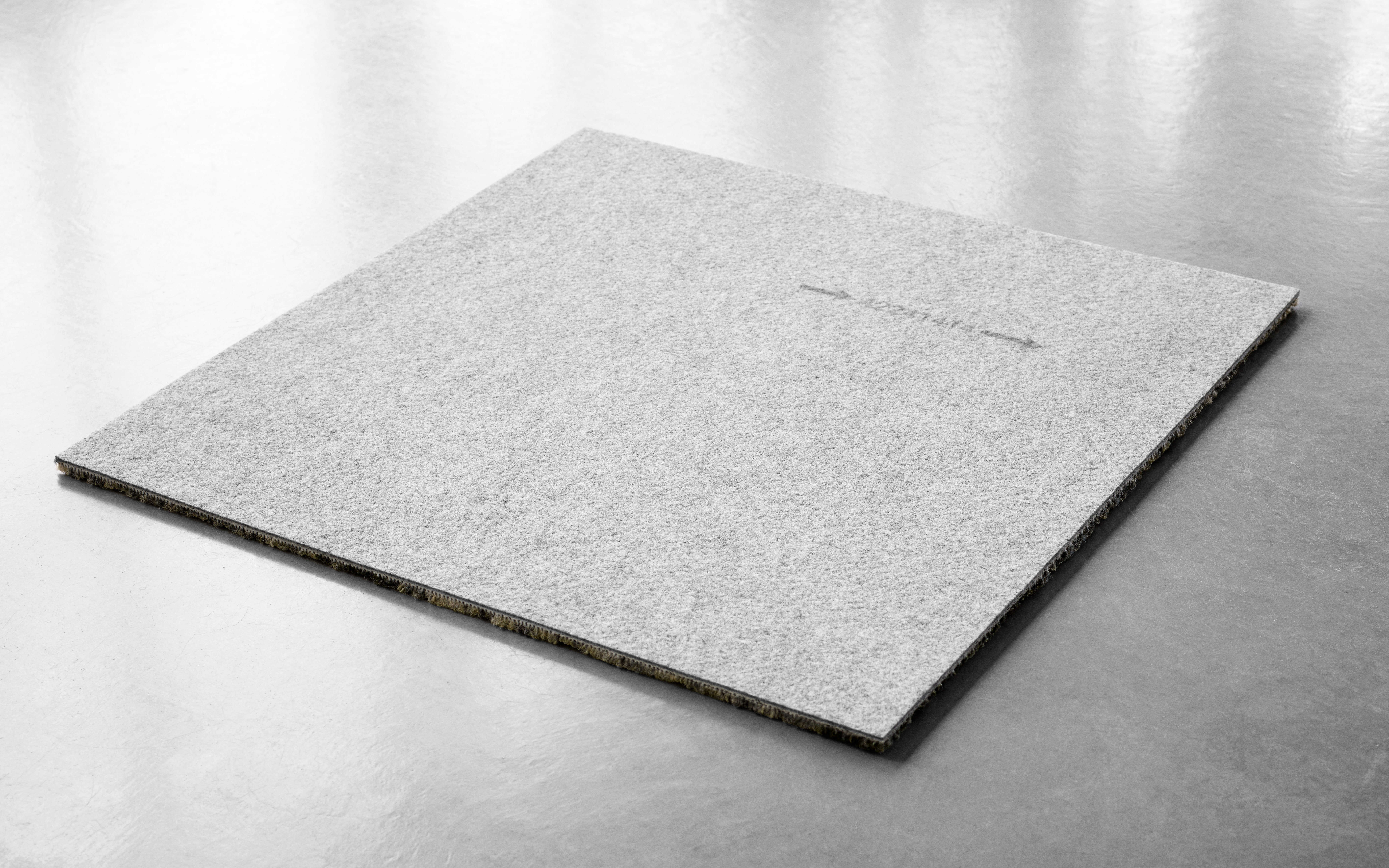
Backing will determine the underfoot feel, acoustic properties
Finally, your choice in carpet backing can have a tactile impact. Pairing the purpose of a hotel room with the backing you select can impact the mood and natural sensation of a space. A cushion backing, paired with a lounge-type space - for example - can accentuate the feeling of relaxation.
On a final note, in order to cut the costs of the hospitality carpet, many carpet manufacturers around the world use bitumen and PVC in their carpet backing. While there are no specific provisions in place prohibiting manufacturers from doing this, the practice is harmful to the environment. If this is an important consideration for you, be sure to ask your supplier about these additives and choose a manufacturer, such as
It's imperative that you, before you get started with your hospitality carpet project, have a plan of action. Mistakes can be costly, particularly with wall-to-wall carpets, where seam placement and direction are critical for optimal results. We suggest that you prepare a detailed carpet placement plan and have your hospitality carpet manufacturer check it to ensure all details are correct.
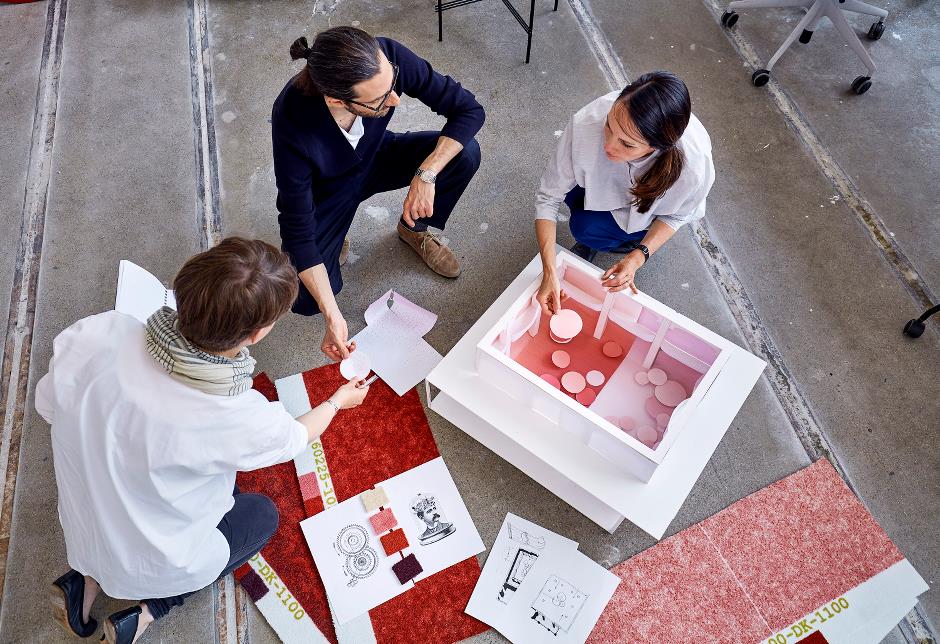
Before the delivery of your carpet is made, it's important that you have details in hand from both your supplier and installer. Check with your supplier about whether you need to account for the 24 hour wait time that may be required for
A smooth installation hinges on you and your floor fitter having a clear plan. We recommend using our installation checklist, in order to ensure that each step of the process is completed on time and on budget.
In order to ensure that your clients remain happy with their hospitality carpet selection, you'll want to establish a clear plan for carpet maintenance. This involves determining the areas of the carpet that will be most impacted by heavy soiling and figuring out how to address them. Generally speaking, the areas you should address are:
Properly addressing these areas is something that can happen preemptively, through use of mats and
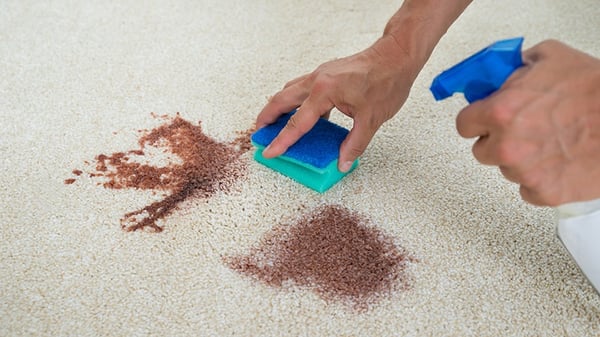
The cost of the hospitality carpet you select varies, depending on carpet type, type of
To make sure you, your client and your carpet fitter are keeping prices to a minimum at every step of the process, we recommend consulting our guide, “How to Run a Profitable Carpet Project.”
Please don't hesitate to get in touch with us for assistance with your hospitality project. From idea to unique carpet solution - no matter where you are in the process - we'd be delighted to help!
Design inspiration delivered straight to you